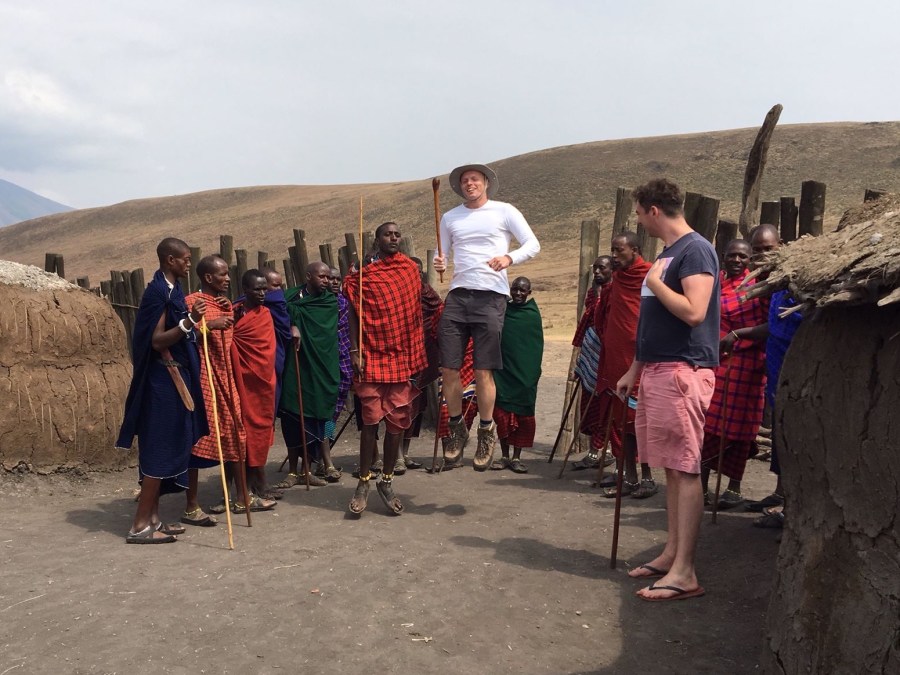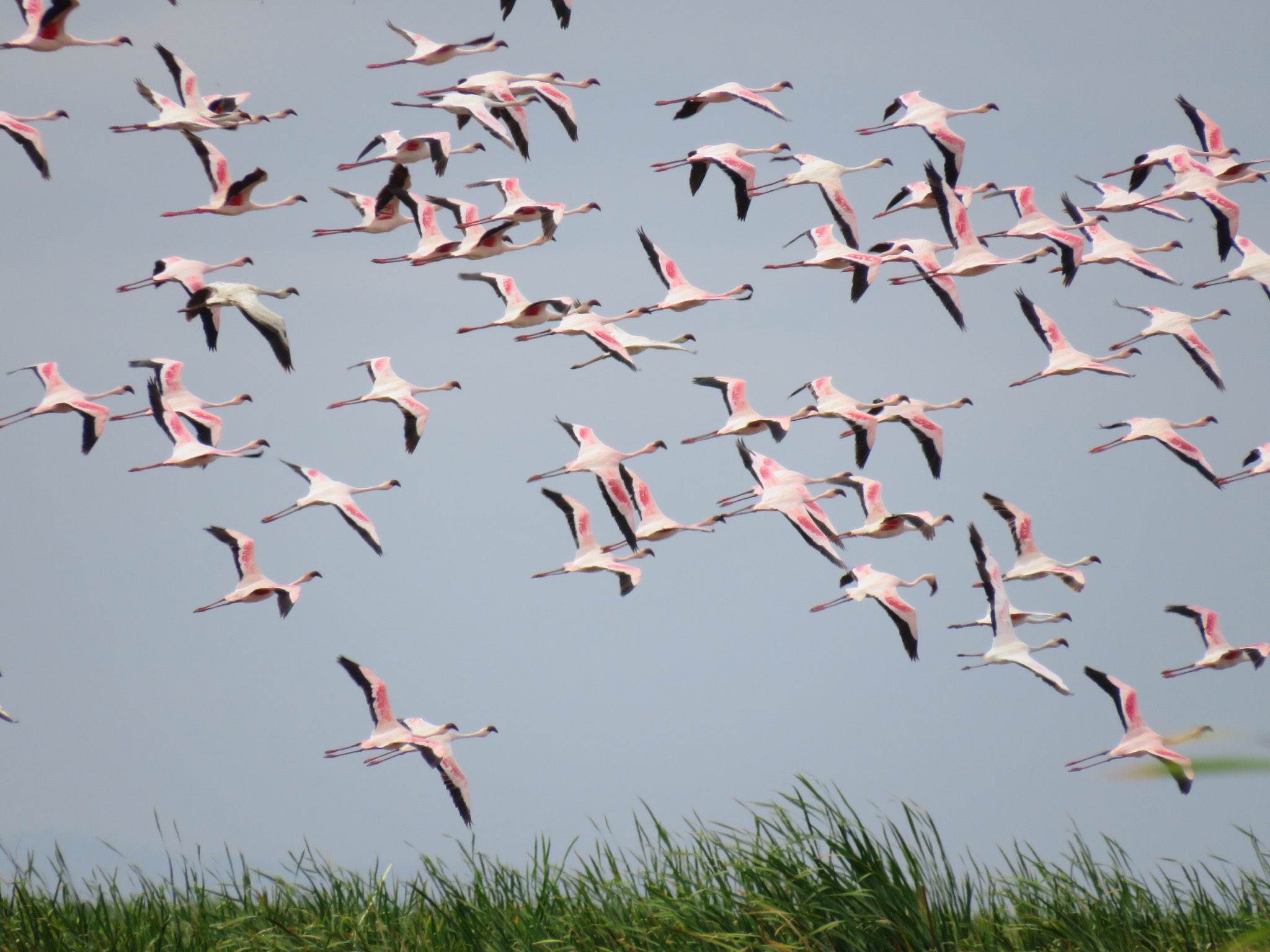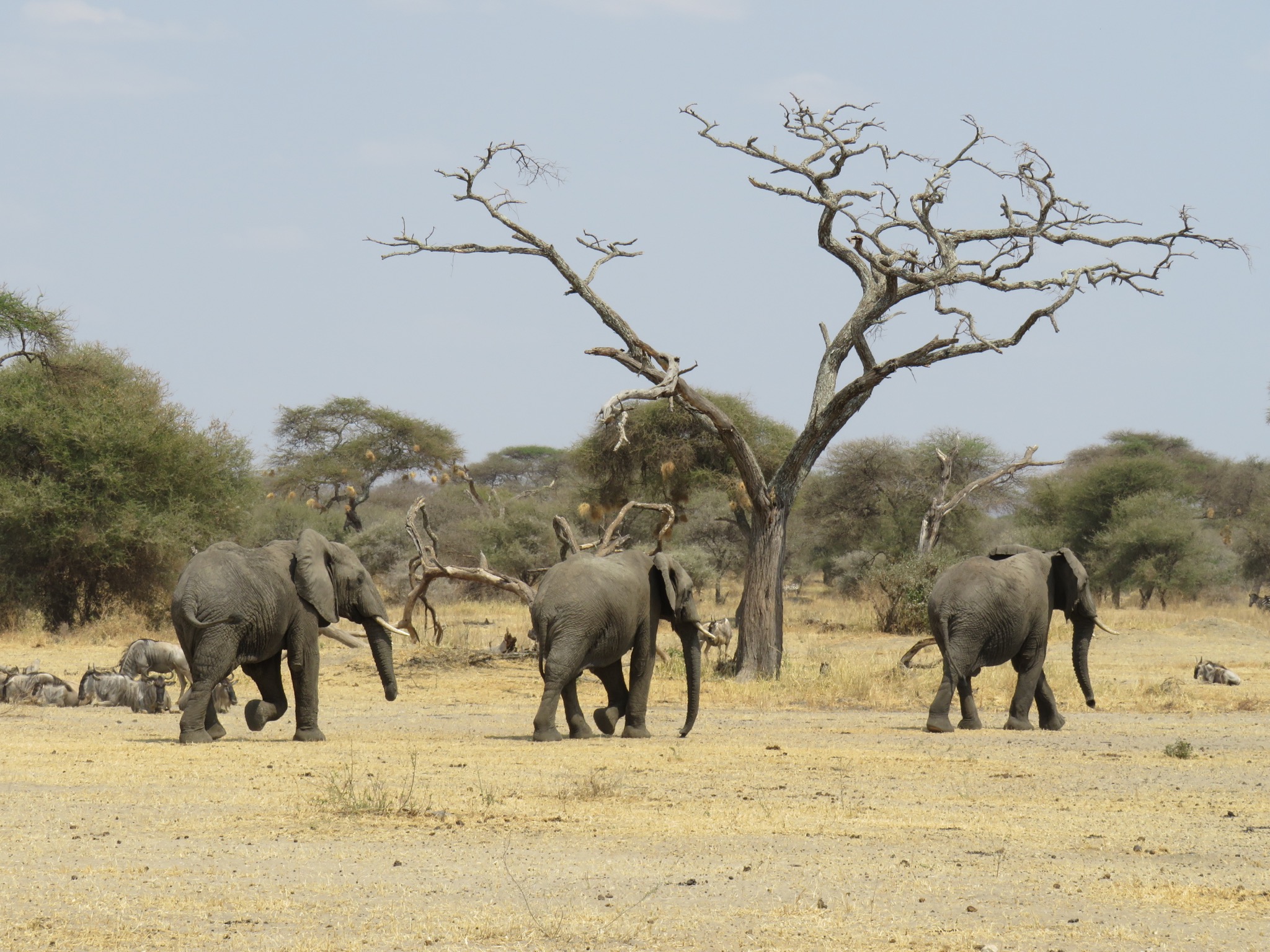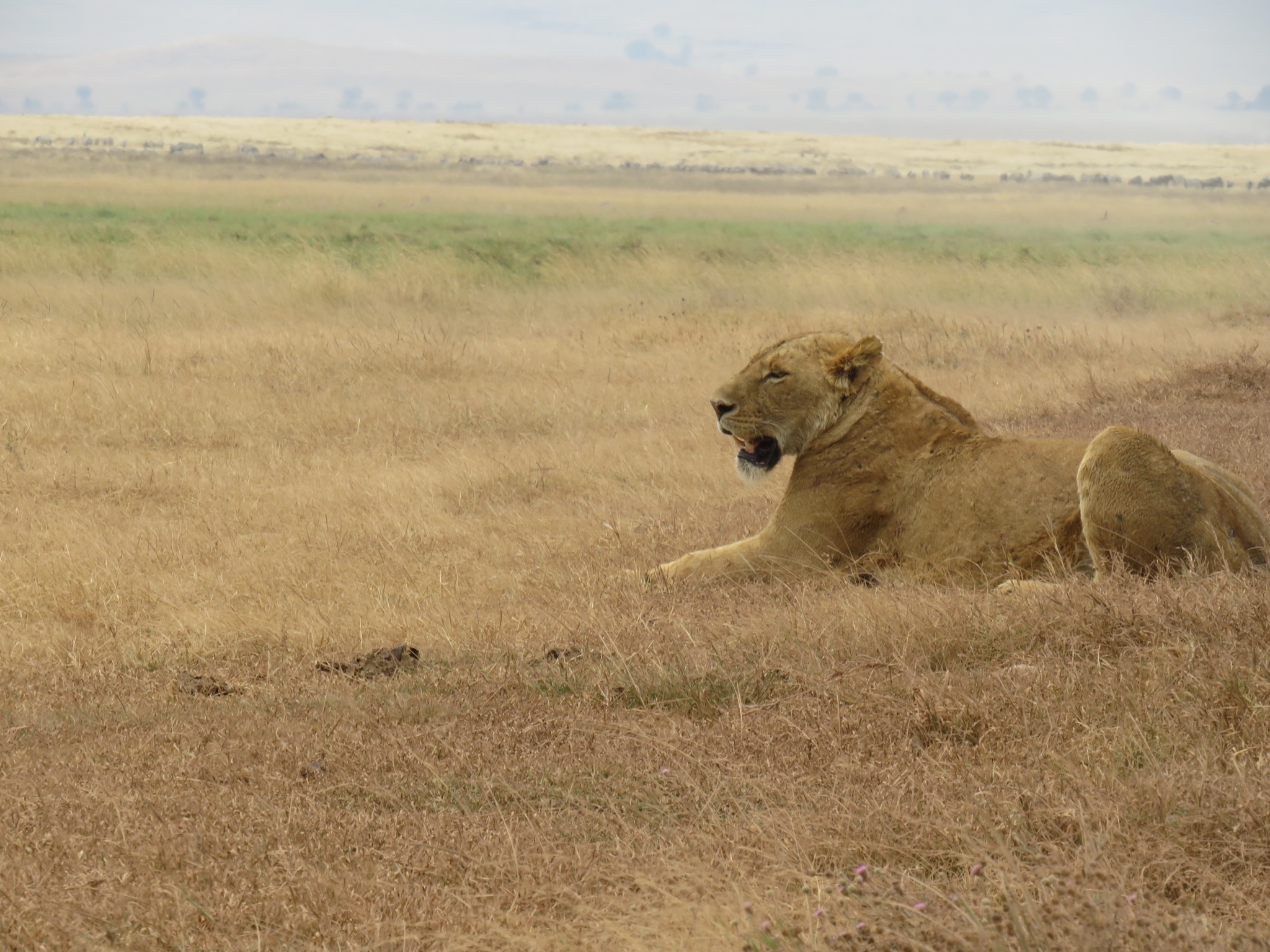Adam Boggon heads to East Africa, where he spies plenty of local wildlife – but also finds more confusion than he bargained for…
Other digital features by Adam Boggon
- Confusion in East Africa
- Saga of Magnus – an Orkney journey
- Down to the river – mucking about in boats in the Borders
- Snowbound
Confusion in East Africa
by Adam Boggon
The Land Cruiser juddered violently from side to side.
Atif, driver and safari guide, held on tight. I saw white all around his eyes. Wreathed in sweat, he eventually wrested control of the vehicle.
“What was that?”
“The bushes. The bushes are worn out.”
“The what?”
“You know, bushes! On the wheels. They have worn out.”
“Is that a problem?”
“No. It’s no problem. Just bushes.”
I have no idea.
I didn’t press the subject. Atif was not an easy man to draw information from and the matter of the bushes was clearly beyond my ken. He assured me he would fix them at camp that night.
I’d arrived in Moshi, a town in the foothills of Mount Kilimanjaro, for a medical course. Before the programme got underway I tagged along with a few other students for a three-day safari through Tarangire, Ngorongoro Crater and Lake Manyara.
Low-grade perplexity is a cornerstone of a traveller’s life in East Africa. I arrived at a bureau de change to obtain a fistful of Tanzanian shillings and found a map of the historical counties of England and a poster titled ‘Animals II’ which displayed a range of fauna atypical for the region: deer, squirrel, rabbit, weasel.
I was shown around Safari Lodge by a man called Peter who introduced himself to me for the first weekend as Gregor. The lodge was empty – I was the first on the course to arrive. Peter/Gregor took me to a room with a bed, fan, mosquito net and en-suite bathroom but nowhere to unpack my belongings. I was staying for six weeks. Upon questioning he admitted that most other rooms were better appointed and happily showed me to one of these. We spoke for some time but seemed always to be at cross purposes. This went on for the duration of my time in Moshi. Either Peter’s English was limited, he had trouble understanding my accent, or he was doing a superb job of hazing me.
“Descending tracks I’d have thought twice about taking my mountain bike down, the Land Cruiser rolled and yawed like a ship in a storm. At a watering hole wildebeest and zebras splashed and pottered”
Over a million tourists come to Tanzania each year and most take the ‘Northern Circuit’ for safari trips through the national parks near Kilimanjaro. Tourism supports 446,000 jobs and contributes £1.5 billion annually to Tanzanian GDP. Peering at wildlife is big business.
Prices for premium tours can be eye watering. A 12-day safari with Abercrombie & Kent will set you back upwards of £6,500.
We plumped for the cheapest version available. £400 for three days. This granted us access to a monosyllabic guide and an arthritic Toyota Land Cruiser with 320,000 miles on the clock, ragged seating, a non-functional speedometer and fuel gauge, wobbly wing-mirrors, and an asthmatic capacity for acceleration which made overtaking a laborious and deeply frightening experience. A ferocious, singeing heat gushed from the engine and threatened to make crackling of my shins. I jammed my hat between my leg and the dashboard to serve as a buffer.
The rains had ended in early June. By late August everything was dry: the long grass brown, trees green on top but spindly and fierce to touch. In the road, occasional herds of skinny cows and goats skulked past us.
We arrived at Tarangire National Park. A sign advised: “Attention please do not take liberty with wild animals.”
Mongoose ambled around. Baobab trees sprawled up at the sky – according to local myth the trees had angered God so were ripped up and planted upside down.
We drove into the park and looked for signs of life.
Laconic, bearded, still preoccupied by bushes – Atif spoke little. When he did try to introduce us to the animals, uncertainty generally ensued: “These are Impala. They live in a hurry in the shed.”
Brows furrowed, we worked out the translation: harem, shade.
Descending tracks I’d have thought twice about taking my mountain bike down, the Land Cruiser rolled and yawed like a ship in a storm. At a watering hole wildebeest and zebras splashed and pottered.
Atif stirred to life after spotting a warthog: “Poombaas are wallowing!”
The river was all but dry. Six elephants rambled through the trees. A seventh traipsed ponderously up the riverbed. We were at the front of a traffic jam. Behind us, long lenses bristled from the open roofs of a pack of all-terrain vehicles. I counted 20.
Further down the trail, a giraffe pruned an acacia tree. Zebras stood around eating grass. Their stripes unique as human fingerprints, the males bite one another as they compete for females. They’re almost impossible to domesticate.
We saw young men huddled around a tree, white paint on their faces. Atif explained they were Maasai “upgrading to the manhood”.
The light of evening in the savannah brings its colours to life: the burnt sacking brown of tilled fields, the champagne straw grass, the flowing blood-red capes of Maasai, the bleached grey-white dust of road.
At night I took a shower in our camp outside the park. A man stoked a wood fire that heated water stored in a tank high above the camp. It ran down through the shower head when I turned the faucet and was gloriously hot. After, I padded over the red earth to a sheltered lounge where there was cold Serengeti beer and my new friends would join for dinner later. I listened to the babble of Swahili and German from tables behind, picked up my book and sank quietly into a wicker chair.
In the morning we set off early for Ngorongoro Crater, a vast caldera formed three million years ago when a volcano collapsed on itself. The floor of the crater covers 100 square miles and throngs with life.
“The Maasai have been steadily displaced from grazing lands to make way for luxury hotels and gulf state corporations that buy up tracts of land for hunting”
50,000 pastoral Maasai live within the Ngorongoro Conservation Area, a UNESCO World Heritage Site since 1979. We visited one of their villages and were invited inside their huts, which were covered in straw and surrounded by a protective ring of wooden stakes. The local chief was 97 years old, had 16 wives and 91 children. He was in bed when we visited.
I met a junior elder called Motif, who seemed to like me because I could jump high and asked many questions. Motif explained that a man can have many wives, depending on how many cows he has.
“If some men have many wives, do many men have no wives at all?” I asked.
Motif found this an amusing question: “Every man should have a wife!”
“That’s all very well but I can’t see how the arithmetic works out.”
“You are funny. Will you stay and become a warrior with us?”
The life of a Maasai man seems appealingly straightforward. You have a long stick for walking and beating unruly cattle. You carry a bush knife and a spear. You wear a red robe called a shuka. You mainly eat beef, milk and blood. If a lion comes for your cow, you throw a spear at it. This way, lions learn to run when they see a red robe.
But of course it’s not straightforward. The Maasai have been steadily displaced from grazing lands to make way for luxury hotels and gulf state corporations that buy up tracts of land for hunting. Their traditional language is forbidden in schools and no Maasai holds a senior position within the conservation authority. They see little of the tourist income that oozes into the region. They may sell beads and dance for the tourists, but that’s about it. Hemmed in to smaller and smaller areas by police and safari companies while their population grows and the Tanzanian government restricts their rights to farm the land they occupy, the Maasai are all but powerless. Alex Renton, writing in the Observer in 2009, described them as “a ghetto race, unwanted in Africa’s new Disneylands”.
We drove away from the Maasai village and down a steep road into the crater.
“Atif, does this Land Cruiser ever tip over?”
“Not in many years.”
“And what happened last time?”
“It is difficult.”
In the crater we saw lions, rhino, cape buffalo and elephants. Then, as we drove out of the park at sunset we saw it – sprawled on a thick horizontal branch of an enormous tree. A leopard.
“Big five! Big five! Well done everybody.” Atif, roused to jubilation at last.
On the third day we drove down to Lake Manyara, stopping at an exhibition of Tanzanite on the way back to Moshi. These pleochroic gems change colour when viewed from different angles and are mined from a single strip in the Merelani Hills of the Manyara region near Arusha. They are said to be 1,000 times rarer than diamond.
Atif had briefly entered the Tanzanite business 20 years ago but quit when he realised he couldn’t reliably tell which stones were really Tanzanite. Or, of those that were Tanzanite, which ones were cracked. Or of the unblemished true Tanzanite, what carat it was. As a buyer of Tanzanite these are obligatory skills – so he’d been taken for a ride.
I tried to find out more about the market and his experience of the trade: “What are you anyway? An investigator!”
It was clearly a touchy subject.
We drove away from the edge of the Great Rift Valley, the 6,000km fissure from Jordan to Mozambique, visible from the moon. I kept quiet in the passenger seat next to Atif. He seemed happiest like that – when we were driving and I wasn’t asking him any personal questions.
I tried to understand why I had warmed to Atif so much. Terse, taciturn, unadorned. Occasionally the corner of his mouth turned up into a quiet smile so I decided that meant he must like me a little bit after all. He seemed to count Tarangire, Ngoronogoro, Manyara and the roads between them to be as much his home as the four walls of his house in Moshi. He never made a fuss. He was unfaltering in his confidence with respect to the bushes, though these were still clearly broken, whatever they were.
Header image © Stephanie Wilson











